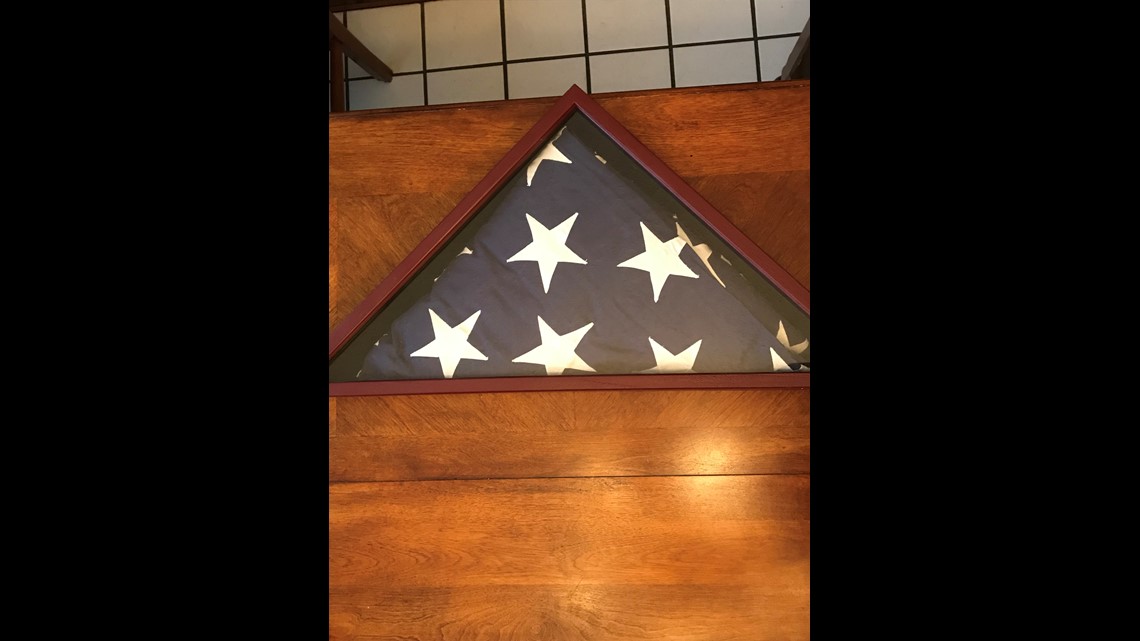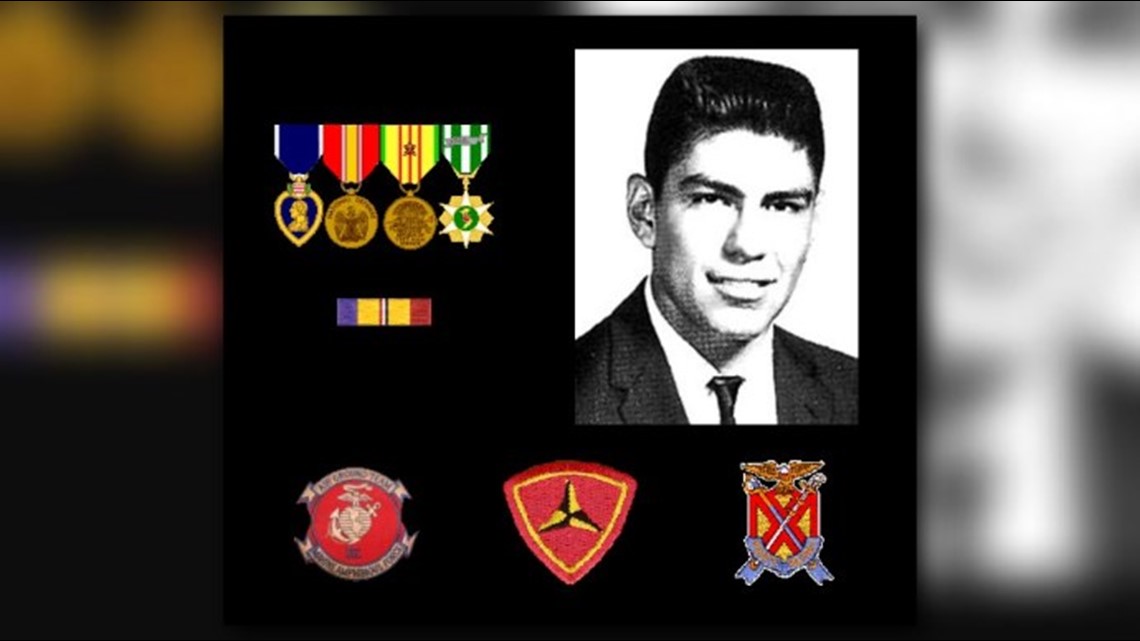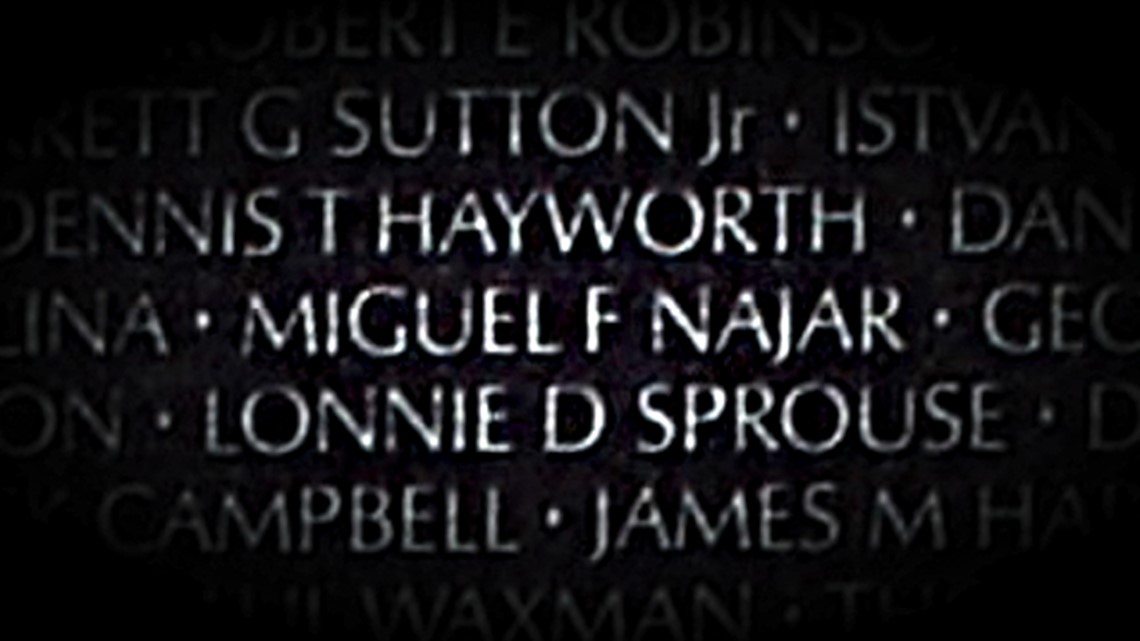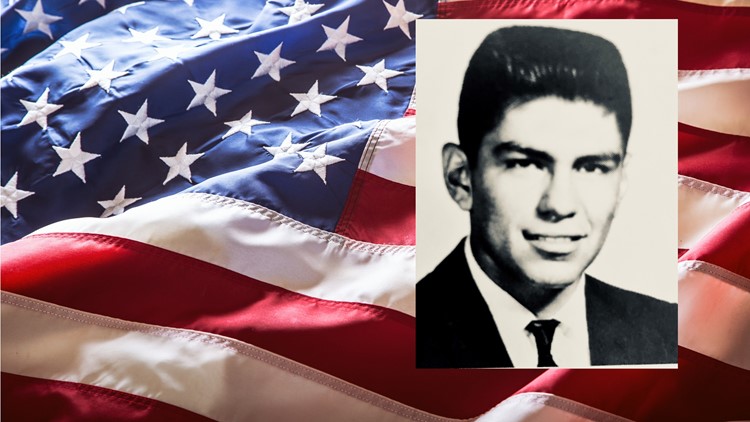Nearly 52 years after his death, Vietnam War casualty Miguel Najar remains a bright light in the memories of his family and former Lee High School classmates and football teammates.
While his friends are now in their early 70s, Najar will be forever young, still the handsome, fresh-faced senior who graduated with Lee’s Class of 1964 before enlisting in the Marines.
All these years later, family and friends still choke back tears when they talk about Najar.
“We were all affected by his death,” former teammate Travis Sebera said. “He was the first one that was killed in Vietnam that we knew, especially those of us who had the close football connection with him. It was sad. It was painful. The starkness of his death brought the Vietnam War home to us. That was real. I think about him every Memorial Day for making the ultimate sacrifice.”
Marine Pfc. Miguel Fernando Najar was killed by hostile fire in Quang Tri, South Vietnam, on Sept. 28, 1966. He was just 20 years old.
“My mother took the pain of his death to her grave,” said Najar’s only surviving brother, Manuel T. Najar Jr., who lives in Richmond near Houston. “Memorial Day is very difficult because I never thought I’d lose a brother like that, never in my worst nightmares. He was just full of life. He knew how to get along with people.”
Najar was born July 5, 1946, in Brownsville, but his family moved to San Antonio before he started school. Najar was the fourth of five children and the youngest of four sons, born to Evangeline and Manuel T. Najar Sr., both deceased. Two brothers, Hector and Ernesto, are also deceased.
Dolores Nevares, the youngest of the Najar children, was two months shy of her 13th birthday when Miguel died.
“He was the brother I was closest to because he was the youngest of the boys,” said Nevares, who lives in Houston. “He would do exercises in the garage with weights and I would count for him. That was one of the big things I did for him, count the number of times he lifted the barbells. Those were my younger days when we were in San Antonio.”


Nevares fought back tears as she recalled when Miguel, who was studying to become an electrician’s apprentice in Houston, told his parents he was enlisting in the Marines.
“That was hard,” she said. “During that time when he was in Houston, a spiritual awareness had totally overtaken him. He was going to church every day. He was going to Mass every day. He made sure he went to confession once a week.”
Nevares spoke haltingly as she recalled the last conversation she had with her brother before he shipped out to Vietnam.
“I remember he pulled me to the side,” she said. “My nickname is Dolly. So, he said, ‘Dolly, I need you to do something for me.’ I said, ‘What’s that?’ In our family, everybody always kissed each other good night. You kissed them in the morning, you kissed them at night, you kissed them when you left, you kissed them when you got back.
“Everybody did that, no matter what, because you knew you might not see them again. He goes, ‘I want you to kiss Mom and Dad for me. So, every night, you’re to kiss them twice. Once for you and once for me, because I’m not going to come back.’ I remember telling him, ‘Hey, come on, Chuck. Don’t say that. You’re going to come back. I’ll kiss them until you get back and then you’ll take back over.’ That was tough.”
Najar was nicknamed "Chuck" by his father because he was chubby as a baby, Evangeline Najar said in a 2001 interview.
"My husband said he looked like a chuck roast, so everybody in our family started calling him Chuck,” she said.
Nevares heard about her brother’s death from the mother of a friend who had given the two girls a ride home from school that afternoon.
“My friend’s mother parked in the front [of the Najar home] and I saw two cars parked in the driveway,” Nevares recalled. “I said, ‘What’s going on?’ She’s the one that told me. I couldn’t even go in the house. And when I finally could, all I could hear was my mom wailing. It was awful. That’s the worst day of my life.”


Manuel T. Najar Jr., the eldest of the Najar brothers, remembered Miguel as a friendly person who simply had a zest for life.
“If you couldn’t get along with him, you couldn’t get along with anybody,” he said. “People just liked him.”
Miguel’s life revolved around football when he was in high school. He played on Lee’s special teams when the Volunteers clashed with defending Class 4A state champion Brackenridge in a storied bi-district playoff game on Nov. 29, 1963, one week after the assassination of President John F. Kennedy.
Led by senior halfback Linus Baer, Lee beat Brack 55-48 before an overflow crowd at Alamo Stadium and a live local TV audience. The classic is still considered one of the best games in Texas high school football history.
“My dad and I were there that night,” Manuel Jr. said.
Najar, a senior backup center and defensive tackle on the 1963 team, threw the final block that sprang Baer for a 95-yard touchdown on a kickoff return early in the game against Brack. The player Najar blocked was legendary running back Warren McVea, who later played for the Kansas City Chiefs.
“I don’t recall him ever starting but he always got in games, especially on defense,” Sebera said. “He was not afraid of anything but he was a little wild in terms of his execution.”
Sebera, a senior on the 1963 squad, started at center and middle linebacker. He recalled how Najar kept him on his toes in practice every day.
“We were both centers, so there was some competition there, but we both respected each other,” Sebera said. “He was always pushing, always hustling. He never lost heart and that was the good thing. He was a good team player. He was loyal. His loyalties were always clear to the football team.”
Lee has a predominantly Hispanic enrollment today but the school’s demographics were markedly different when Najar was a student.
“He was one of a handful of people of color in the whole school,” Sebera said. “At that time, the school was not very integrated. To my recollection, he was the only Hispanic on the football team.”


Sebera was a student at Texas Tech when he learned of Najar’s death from former teammate Mark Schreiber. Sebera, Schreiber, and two other former Lee players – Sebera couldn’t remember their identities – flew from San Antonio to Houston for Najar’s funeral. Najar enlisted in the service in Houston, where his parents moved to in 1965.
Sebera’s voice grew thick with emotion as he recalled his poignant memories of Najar’s funeral service.
“I remember going into the church and the family was sitting in the front pews,” Sebera said. “It was a military funeral, so I remember flags and an honor guard standing there. The other thing that’s interesting, and I think a lot about this around Memorial Day, after we stood at the casket and paid our respects, we walked to the family to pay our respects. I introduced myself to his dad and his face kind of lit up and he said, ‘Oh, you’re Travis. You were always his biggest competitor.’
“I’m thinking we played football and he saw me as a competitor and friend. Here this young man just gave the ultimate sacrifice and his dad’s memory is from our football days. The feelings that came over me, I was shocked and overwhelmed. I assured him that Miguel won, so to speak. It was very humbling. I think of that every Memorial Day because of the significance of those words.”
Najar is buried next to his father and mother at Memorial Oaks Cemetery in Houston. Manuel Sr. died in 1991 and Evangeline in 2010.
Baer, one of the legends of San Antonio high school football, recalled happier days when Najar was nicknamed “Chief” by his teammates.
“The reason we called him Chief is because he would do this rain dance in our locker room, hoping that the practice would be canceled,” Baer said. “Sometimes it would rain. Everybody loved him. We had a lot of fun together.
“I was devastated when I heard about [his death], although I don’t remember who told me or how I found out. I still think about him, especially when Memorial Day rolls around.
Sebera also recalled Najar’s rain dance, chuckling while describing the scene in the Vols’ locker room.
“Miguel had a great sense of humor,” Sebera said. “He played around a lot, never maliciously but always playing, always laughing about stuff and making fun of stuff. The rain dance thing was part of that. It had to be in the locker room and he had to be naked. Those were two requirements. We’d all start clapping our hands and jumping around until we had to get serious.”
Bill Zinsmeyer, a 1964 Lee graduate who was a close friend of Najar, has seen his former classmate’s name on the Vietnam Veterans Memorial in Washington, D.C. He has visited the memorial twice with his wife, Janet, a 1963 Lee graduate who knew Najar.


Nevares also has visited the memorial and has an etching of her brother's name that she traced on the wall.
Zinsmeyer was hit hard by the news of Najar’s death.
“It really hurt,” Zinsmeyer said. “It was just horrible.”
More than a half-century later, Zinsmeyer still remembers the qualities that endeared Najar to people.
“Miguel was full of life,” Zinsmeyer said. “I don’t think I ever saw Miguel down. He was always smiling, happy, joyful. Always had something to kid around about. He was just somebody you loved to be around. He had a wonderful, wonderful personality. Everybody loved him.”
Such are the ties that bind.


